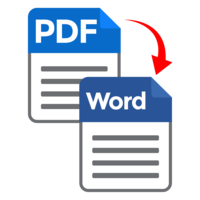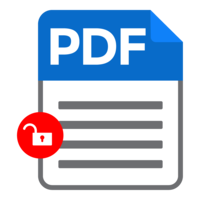Are you a literature enthusiast looking to read Arthur Miller’s “The Crucible”? Do you want to access the play in PDF format? If so, you’ve come to the right place. This article will guide you through everything you need to know about “The Crucible” PDF, including its background, plot, characters, and themes. Readers can download the pdf from this article. If you do not want to downland it you can also read it on our website for free.
1. Introduction
Arthur Miller’s “The Crucible” is a renowned play that has captivated audiences and readers alike since its publication in 1953. Set in the late 17th century, the play dramatizes the events of the Salem Witch Trials, during which a group of young girls accused innocent people of witchcraft, resulting in the deaths of several individuals. In this article, we’ll provide an overview of “The Crucible” PDF, including its historical context, plot summary, characters, and themes.
2. About “The Crucible”
“The Crucible” is a play written by Arthur Miller that premiered on Broadway in 1953. The play is set in Salem, Massachusetts, during the Salem Witch Trials of 1692-93. Miller drew inspiration for the play from his own experiences during the anti-communist “Red Scare” of the 1950s. The play explores themes of mass hysteria, power, and authority, and has been widely acclaimed for its social commentary.
Download link for the crucible pdf is given below
3. Historical Background
The Salem Witch Trials were a series of hearings and prosecutions of people accused of witchcraft in colonial Massachusetts between February 1692 and May 1693. The trials resulted in the execution of twenty people, mostly women. The accusations were largely based on superstition and hearsay, and the trials have been widely criticized for their lack of due process and the use of spectral evidence (testimony about dreams and visions). “The Crucible” draws from the events of the Salem Witch Trials to comment on the dangers of hysteria and the abuse of power.
4. Plot Summary
“The Crucible” is a four-act play that follows the events of the Salem Witch Trials. The play opens with a group of young girls dancing in the forest with a black slave named Tituba. Reverend Parris, the local minister, catches them and becomes concerned that they may have been involved in witchcraft. When one of the girls, Betty Parris, falls into a coma-like state, rumors begin to spread that the girls were indeed involved in witchcraft.
As the hysteria grows, the girls begin to accuse other members of the community of witchcraft. The accusations are largely based on personal grudges and vendettas, and the trials quickly become a means for settling scores. The protagonist of the play, John Proctor, is a farmer who has had an affair with one of the accusers, Abigail Williams. Proctor is hesitant to admit to the accusations and is ultimately convicted and sentenced to death. The play ends with Proctor refusing to confess and choosing to hang rather than sign a false confession.
5. Characters
“The Crucible” features a range of characters, each with their own motivations and personalities. Here are the main characters you need to know:
5.1 Protagonist
- John Proctor: A farmer who becomes embroiled in the witch trials when his wife is accused of witchcraft. Proctor is known for his honesty and integrity but is also haunted by guilt over his affair with Abigail Williams.
5.2 Antagonist
- Abigail Williams: The ringleader of the group of girls who accuse others of witchcraft. Abigail is manipulative and vindictive and uses the trials to seek revenge against those who have wronged her.
5.3 Supporting Characters
- Reverend Parris: The local minister discovers the girls dancing in the forest and becomes obsessed with the idea of witchcraft.
- Elizabeth Proctor: John Proctor’s wife, who is accused of witchcraft.
- Judge Danforth: The presiding judge over the witch trials, who is determined to root out witchcraft at all costs.
- Reverend Hale: A minister called in to investigate the accusations of witchcraft, who later realizes the flaws in the trials.
6. Themes
“The Crucible” is rich with themes that explore the dangers of mass hysteria, power, and authority. Here are some of the key themes in the play:
6.1 Mass Hysteria and Mob Mentality
The play shows how the Salem community becomes caught up in a wave of hysteria and paranoia, leading to false accusations and the persecution of innocent people.
6.2 Integrity and Reputation
Many characters in the play are motivated by a desire to protect their reputation and maintain their standing in the community. This can lead to characters acting in ways that compromise their integrity, such as when John Proctor is hesitant to reveal his affair with Abigail Williams.
6.3 Power and Authority
The play shows how those in positions of power can abuse their authority for personal gain. Judge Danforth is particularly guilty of this, as he becomes more and more determined to root out witchcraft, even in the face of evidence to the contrary.
6.4 Gender Roles
“The Crucible” also explores the role of women in Puritan society, and how they were often viewed with suspicion and accused of witchcraft.
7. Analysis of “The Crucible”
In addition to its themes, “The Crucible” is also notable for its writing style, use of symbolism and allegory, and social commentary.
7.1 Writing Style
Miller’s writing style in “The Crucible” is spare and straightforward, emphasizing the bleakness and severity of the events.
7.2 Symbolism and Allegory
“The Crucible” is filled with symbolism and allegory that comment on the dangers of conformity and the abuse of power. For example, the witch trials can be seen as a stand-in for the anti-communist hysteria of the 1950s.
7.3 The Crucible as a Social Commentary
Miller intended “The Crucible” as a commentary on the dangers of mass hysteria and the abuse of power, particularly in the context of the McCarthy era. The play has been widely celebrated for its social commentary and its ability to speak to contemporary issues.
8. “The Crucible” Adaptations
“The Crucible” has been adapted numerous times for both stage and screen.
8.1 Film
One of the most famous adaptations is the 1996 film version, directed by Nicholas Hytner and starring Daniel Day-Lewis as John Proctor. The film received critical acclaim and was nominated for several Academy Awards.
8.2 Stage
“The Crucible” has been staged countless times since its debut in 1953, and continues to be a popular play for both professional and amateur productions.
Direct download link for the crucible pdf
File name : The-Crucible-pdf-download.pdf
https://blogs.facepdf.com/wp-content/plugins/pdf-poster/pdfjs/web/viewer.html?file=https://blogs.facepdf.com/wp-content/uploads/2023/05/The-Crucible-pdf-download.pdf&download=true&print=&openfile=false
9. Conclusion
“The Crucible” is a timeless play that explores the dangers of mass hysteria, power, and authority. Miller’s spare writing style and use of allegory and symbolism make the play both engaging and thought-provoking. “The Crucible” remains a relevant commentary on the dangers of conformity and the abuse of power, and its themes continue to resonate with audiences today.
FAQs
- What is “The Crucible” about?
“The Crucible” is a play about the Salem witch trials, which took place in the Massachusetts Bay Colony in the late 17th century.
- Who wrote “The Crucible”?
“The Crucible” was written by Arthur Miller.
- What themes does “The Crucible” explore?
“The Crucible” explores themes of mass hysteria and mob mentality, integrity and reputation, power and authority, and gender roles.
- What is the symbolism in “The Crucible”?
“The Crucible” is filled with symbolism and allegory, including the witch trials as a stand-in for the anti-communist hysteria of the 1950s.
- Has “The Crucible” been adapted for film and stage?
Yes, “The Crucible” has been adapted numerous times for both stage and screen, including a critically acclaimed 1996 film version starring Daniel Day-Lewis.







